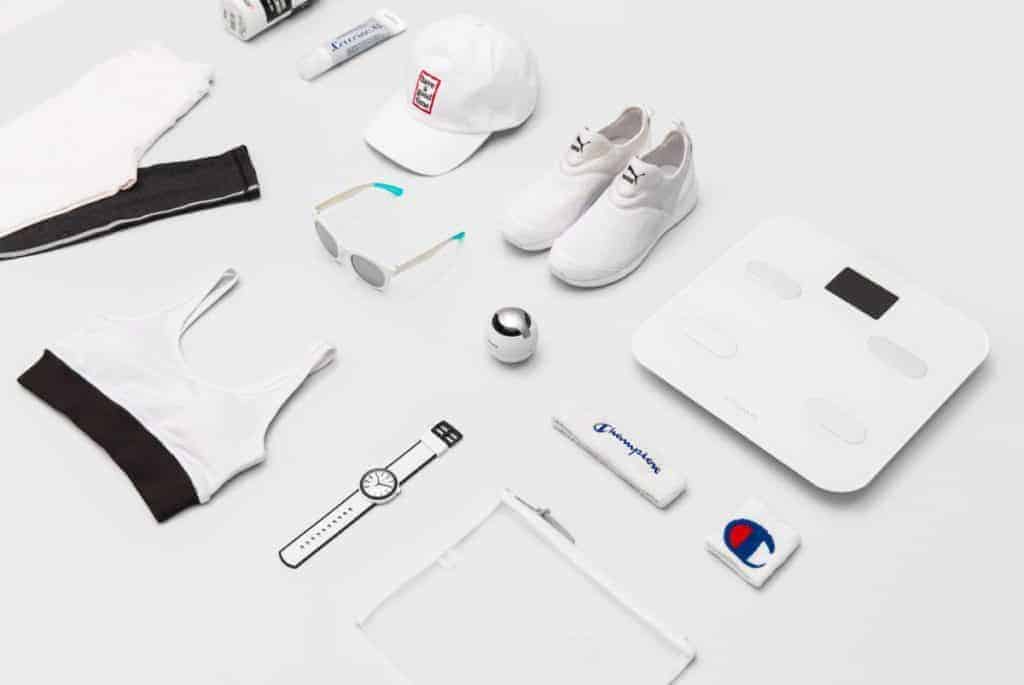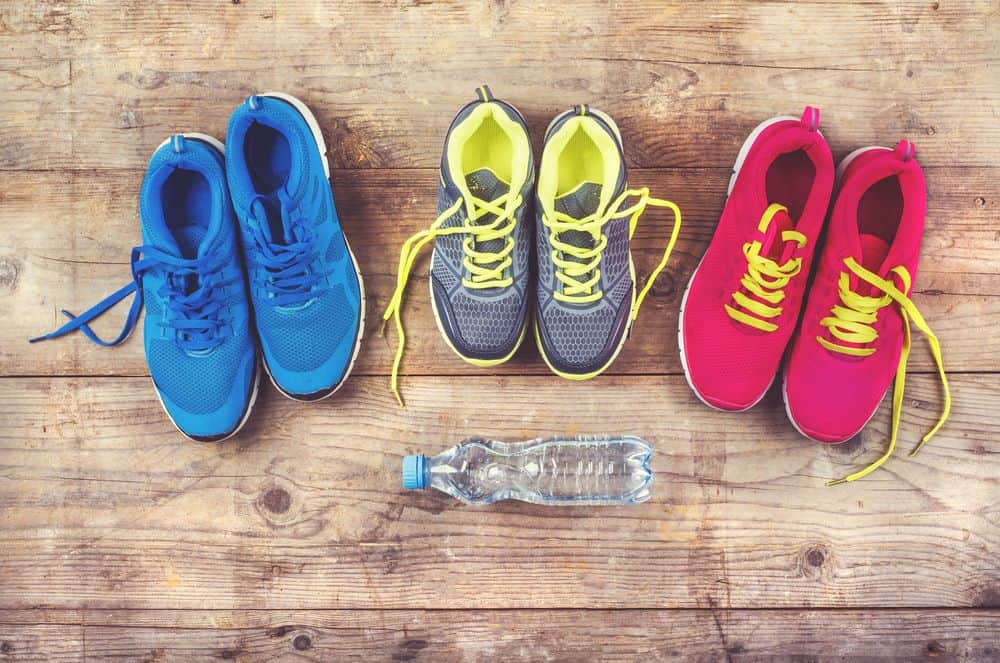Running doesn’t demand much. Just feet hitting ground, lungs pulling air, and the stubborn will to keep going when your body screams to stop. But the right gear can transform this simple act from pure suffering into something almost bearable, maybe even good. You don’t need much to start running – that’s the dirty little secret the industry doesn’t want you to know. But what you do need matters.
Let’s cut through the marketing noise and talk about what running gear beginners actually need before they hit the pavement. No frills, no bullshit, just the essentials that make the difference between quitting after two weeks and building a sustainable habit.
Key Takeaways
- Good running shoes are non-negotiable – they’re the only true essential and worth investing in first
- Technical fabric beats cotton for comfortable running clothes that won’t chafe or hold sweat
- Start minimal and add gear as specific needs arise rather than buying everything upfront
- Weather-appropriate gear significantly impacts running consistency and comfort across seasons
- Hydration solutions become necessary once you’re running longer than 30 minutes
- Tracking progress via app or basic watch helps maintain motivation, but fancy GPS watches are optional luxuries for beginners
The Only True Essential: Your Running Shoes
The relationship between your feet and the ground is sacred. It’s where every stride begins and ends, the point of impact that travels through your entire skeleton. Respect it.“But any shoes will work, right?” Wrong. Running in bad footwear is like drinking whiskey from a dirty glass – it ruins the experience and eventually makes you sick.
Good running shoes aren’t about status or looking like a “real runner.” They’re about preventing injuries. Your knees don’t care about fashion, but they’ll remember every impact on concrete through those flat canvas sneakers you thought would work fine.
Different feet need different shoes. Some people overpronate (feet roll inward), others underpronate (feet roll outward), and some lucky bastards have neutral pronation. Each requires different support. Visit a specialty running store where they’ll watch you walk or run to recommend appropriate shoes.
Expect to spend $80-140 for entry-level but decent running shoes. Yes, it’s an investment. But proper running form combined with appropriate footwear is your first defense against injury.
What Makes Running Shoes Different?
Regular athletic shoes aren’t designed for repetitive forward motion. Running shoes feature:
- Appropriate cushioning for impact absorption
- The right support for your pronation type
- Breathable materials to prevent blisters
- Flexible soles that allow natural foot movement
- Lightweight construction to reduce fatigue
Just starting? Go for versatile road running shoes with moderate cushioning. Save the specialized racing flats and trail monsters for later.
Running Clothes: The Basics That Don’t Suck
Cotton is running’s enemy. It soaks sweat, stays wet, and chafes like sandpaper on sensitive skin. Technical fabrics are your friends – they wick moisture away and dry quickly.For beginners, you need:
Bottom Half Essentials
- 1-2 pairs of running shorts or tights
- Running-specific socks (prevent blisters, worth every penny)
Top Half Necessities
- 2-3 moisture-wicking shirts (short sleeve for warm weather, long sleeve for cold)
- Sports bra for women (high support, specifically designed for running)
Weather Protection
- Lightweight running cap for sun protection
- Simple running jacket for wind/light rain
The beauty of running clothes? They’re not complicated. Function trumps fashion every time. The $80 shorts perform nearly identically to the $30 ones. Start basic, and you’ll quickly learn what matters to your specific comfort.
For winter runners, proper breathing techniques become as important as your clothing layers when temperatures drop.
Accessories: What Actually Makes a Difference
The running industry loves selling you shit you don’t need. But some accessories genuinely improve the experience:
Hydration Solutions
Once you’re running more than 30 minutes, water becomes necessary. Options include:
- Handheld water bottle (cheapest, simplest solution)
- Waist belt with water bottles (more comfortable for longer runs)
- Hydration vest (overkill for beginners but excellent for long distances)
Start simple. The fancy gear can come when you’re regularly running distances that actually require it.
Tracking Your Progress
Before you drop $500 on a GPS watch, consider:
- Free phone apps track distance, pace, and routes effectively
- Basic fitness tracker counts steps and estimates distance
- Simple digital watch with stopwatch function works fine for timed intervals
Tracking progress helps maintain motivation, but beginners don’t need advanced metrics. Save the heart rate zones and VO2 max calculations for when you’ve established the habit.
If you’re looking to improve your cardiovascular endurance, consistent running matters more than fancy tracking gear.
Building Your Kit Without Breaking the Bank
You could drop a thousand dollars on running gear. Don’t. Start with essentials and add pieces as specific needs arise:
- Good shoes – your only non-negotiable investment
- Comfortable clothes – 1-2 technical fabric outfits
- Basic hydration – simple water bottle to start
- Safety items – reflective gear if running in low light
- Simple tracking – app or basic watch to monitor progress
Most beginners quit before their shoes wear out. Be pragmatic. The fancy compression socks and heart rate monitors can wait until you’ve established running as a habit.
When building your home gym equipment, apply this same minimalist approach – start with versatile basics that complement your running.
Seasonal Considerations: Dressing for Success
Running through all seasons requires adaptability. Your gear needs change with the weather:
Summer Running Gear
- Lightweight, light-colored clothing reflects sun
- Hat and sunglasses protect from UV rays
- Increased hydration capacity for hot days
- Body glide or anti-chafe balm for sweaty conditions
Fall/Spring Running Gear
- Layers for temperature fluctuations
- Light gloves and ear warmers for chilly mornings
- Reflective elements for shorter daylight hours
Winter Running Gear
- Thermal tights or pants with wind-resistant front panels
- Layering system: moisture-wicking base, insulating mid-layer, wind/water-resistant outer
- Warm hat, gloves, neck gaiter to protect extremities
- Visible colors/reflective elements for dark winter days
- Trail shoes with more grip for snow/ice conditions
Winter presents unique challenges, but with proper gear, running benefits can be enjoyed year-round.
When to Upgrade: Signs You’re Ready for Better Gear
Knowing when to upgrade is as important as knowing what to buy initially:
Upgrade Your Shoes When:
- You’ve logged 300-500 miles in them
- The tread is significantly worn
- You feel new aches and pains
- The cushioning feels flat and “dead”
Upgrade Other Gear When:
- Current items cause specific problems (chafing, overheating)
- You’re consistently running distances that expose limitations
- Seasonal changes require different protection
- You’ve maintained consistent running for 3+ months
Beginners often mistake gear upgrades for performance solutions. Remember: the best gear upgrade is the one that removes a specific barrier to your running consistency.
If you’re struggling with running motivation, better gear might help, but addressing the psychological aspects is equally important.
Beyond the Basics: Nice-to-Haves
Once you’re committed to running, these “luxury” items become more justifiable:
Recovery Tools
- Foam roller for working out tight muscles
- Massage gun for targeted relief
- Compression socks for recovery after long runs
Performance Accessories
- Running-specific sunglasses that don’t bounce or fog
- Sweat-proof earbuds for music/podcast motivation
- Flip belt or running pouch for phone/key storage
Advanced Tracking
- GPS running watch for detailed metrics
- Heart rate monitor for intensity training
- Smart scales for tracking weight fluctuations
For serious runners focusing on fat burning, these advanced tools provide valuable data, but they’re luxuries for beginners.
Common Beginner Gear Mistakes
The running store sales rep sees you coming a mile away. Fresh enthusiasm and a credit card are a dangerous combination. Avoid these common pitfalls:
Overbuying Before Establishing the Habit
That moisture-wicking fabric won’t motivate you when it’s raining and your bed is warm. Establish running as a habit before investing in specialized gear.
Choosing Fashion Over Function
Those neon compression sleeves look cool, but do you need them? Prioritize gear that solves actual problems you experience while running.
Ignoring Seasonal Needs
Running in summer requires different gear than winter running. Plan accordingly or you’ll find yourself making emergency purchases or skipping runs.
Skimping on Shoes to Splurge on Gadgets
Your GPS watch won’t prevent shin splints from improper footwear. Allocate your budget to items in order of importance, with shoes always at the top.
Buying Gear for the Runner You Want to Be, Not the Runner You Are
Be honest about your current level. The ultra-marathon hydration vest is excessive for someone running 2 miles three times a week.
Digital Running Companions: Apps and Tracking
While physical gear gets most attention, digital tools can significantly enhance your running experience:
Beginner-Friendly Running Apps
- Couch to 5K apps that gradually build endurance
- Interval timer apps for structured workouts
- Audio coaching apps providing real-time feedback
Simple Tracking Solutions
- Basic activity trackers counting steps and distance
- Smartphone GPS for route mapping
- Online running communities for accountability
Digital tools shine when they solve specific problems: motivation, accountability, or structured progression. They become problematic when they overcomplicate the simple act of running.Proper nutrition planning is another digital resource worth exploring alongside your running practice.
Safety Gear: Often Overlooked But Critical
The best running gear keeps you alive and visible. Don’t skimp on safety:
- Reflective vest/bands for low-light conditions
- Headlamp or knuckle lights for seeing and being seen
- Road ID or similar identification in case of emergency
- Weather-appropriate gear preventing hypothermia or heat exhaustion
- Personal alarm or safety app for solo runners
No running performance benefit is worth risking your safety. These items lack glamour but might save your life.
The Truth About Running Gear Marketing
The running industry excels at making you feel inadequate. Their message: “Serious runners use serious gear.” Reality check: Olympic marathoners in Kenya often train in basic clothing and shoes.
What makes a real runner isn’t gear—it’s consistency. The weathered guy in the plain cotton shirt logging daily miles for years is more legitimate than someone with $2,000 of unused equipment.When evaluating gear claims, ask: “Does this solve a specific problem I’m experiencing?” If not, it’s likely a luxury rather than a necessity.
Building strength training into your routine often delivers more performance benefits than gear upgrades.
A Final Word on Running Gear
The best running gear disappears from consciousness. You shouldn’t notice good gear while running—it should eliminate distractions and discomfort, letting you focus on the run itself.
Start simple. Add pieces that solve real problems. Ignore the marketing hype pushing magical solutions. The most important equipment for running success isn’t something you wear—it’s the consistency of showing up, day after day, when motivation wanes and excuses multiply.
Running strip-mines the unnecessary from life, revealing what matters. Apply this same philosophy to your gear: what’s essential? What actually makes a difference? What’s just noise?
The best runners aren’t defined by what they wear, but by what they do in whatever they’re wearing. Put one foot in front of the other. Repeat. The rest is just details.Ready to start your outdoor running journey?
Remember that proper gear supports your goals, but never replaces the work.
References:
- https://www.runnersworld.com/uk/gear/g63319440/best-running-gear-for-beginners/
- https://www.rei.com/learn/expert-advice/essential-running-gear-checklist.html
- https://www.cosmopolitan.com/lifestyle/a62175710/best-running-gear-for-women/
- https://stylerave.com/the-best-running-gear-for-beginners/
- https://www.nursetonomad.com/beginner-running-gear/
- https://www.runnersworld.com/beginner/g63250285/best-running-gear-for-beginners/
- https://www.runningwarehouse.com/learningcenter/gear_guides/accessories/running_gear_for_beginners.html
- https://run.outsideonline.com/gear/running-gear-for-beginners-must-haves-vs-nice-to-haves/
- https://marathonfinishline.com/must-haves-every-runner-needs/
- https://www.outdoorgearlab.com/topics/fitness/best-running-gear
- https://5kruns.co.uk/running-kit/running-equipment-for-beginners/
- https://www.verywellfit.com/gear-for-runners-what-you-need-to-get-started-6560987
- https://www.runnersathletics.com/blogs/news/a-beginners-guide-to-running-gear-the-essentials
- https://www.rebelsport.com.au/blog/running/running-gear-checklist-for-beginners.html
- https://www.runnersneed.com/expert-advice/training/a-complete-beginners-guide-to-running.html
- https://www.nuffieldhealth.com/article/running-essentials-for-beginners
- https://www.youtube.com/watch?v=iSCnPn5rXYU
- https://www.youtube.com/watch?v=P64_1lNhRbM
- https://spibelt.com/blogs/blog/a-beginner-s-guide-to-running-accessories
- https://www.treelinereview.com/gear-list/running-accessories
- https://www.reddit.com/r/running/comments/upr84r/getting_started_with_running_how_much_new_stuff/
- https://run-for-good.com/running-stuff-i-cant-live-without/
As a veteran fitness technology innovator and the founder of GearUpToFit.com, Alex Papaioannou stands at the intersection of health science and artificial intelligence. With over a decade of specialized experience in digital wellness solutions, he’s transforming how people approach their fitness journey through data-driven methodologies.

